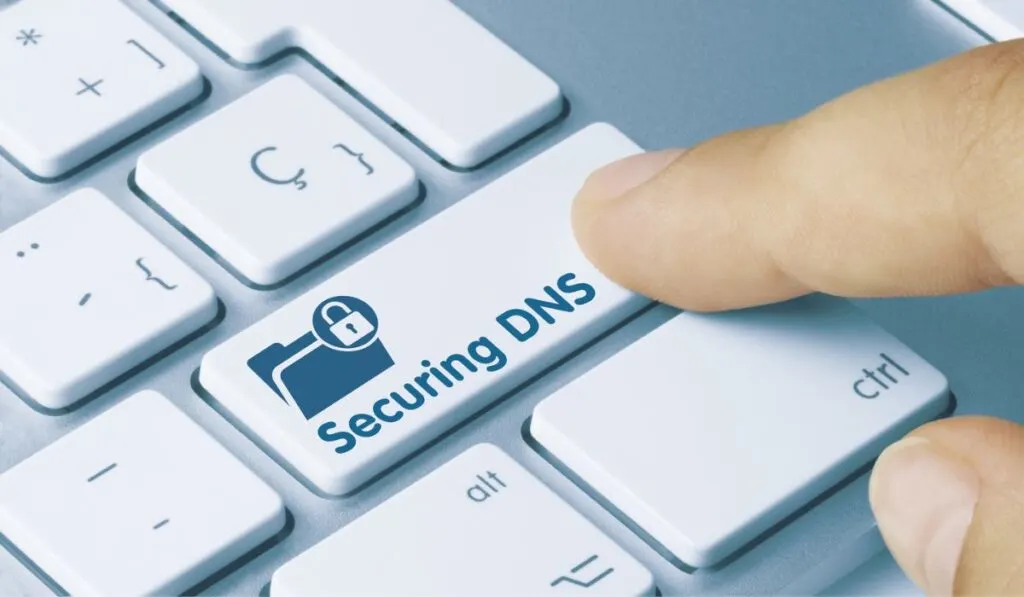Are you experiencing slow website loading times or unresponsive websites? It may be time to clear your DNS cache. Flushing the DNS cache is a simple yet effective troubleshooting solution to resolve minor bugs. So, how do you clear the DNS cache in Windows 10?
First, launch the Command Prompt by typing ‘cmd’ in the search bar. Right-click ‘Command Prompt’ and select ‘Run as Administrator.’ Next, type the following command: ipconfig /flushdns. Press ‘Enter’ and you should see a message stating that you successfully flushed the DNS Resolve Cache.
As you can see, there’s no need to worry if you need to clear the DNS cache. Flushing the cache is a standard procedure that’ll take just a few minutes (if that). Let’s take a closer look at how you can clear your DNS cache in Windows 10.
How Do You Clear DNS Cache in Windows 10?

If you’re encountering internet connectivity problems, like slow website loading times or unresponsive websites, it might be time to clear your DNS cache.
The DNS cache in Windows 10 is a temporary database. It stores information about previously visited websites and their IP addresses.
When you access a website, your PC checks the DNS cache to determine if it already has the IP address. If it does, it loads the website faster.
In some cases, the DNS cache becomes outdated or corrupted, causing internet connectivity problems. Clearing the DNS cache can help resolve these errors by allowing your device to find the IP address again.
Step 1: Launch Command Prompt
The first step is to launch the Command Prompt. First, enter ‘cmd’ in the search bar. Right-click Command Prompt and select ‘Run as Administrator.’
Step 2: Enter the Command
Once the Command Prompt opens, type the following command: ipconfig /flushdns
Click ‘Enter.’ The message ‘Successfully flushed the DNS Resolver Cache‘ should appear.
Step 3: Close the Command Prompt
That’s it! Now you can close the Command Prompt window to finish clearing the DNS cache in Windows 10. If you experience any problems, restart your PC and repeat the steps listed above.
Is It Safe to Flush DNS Cache?
Yes, it’s entirely safe to flush the DNS cache in Windows 10.
Clearing the DNS cache can help resolve internet connectivity errors, such as unresponsive websites and slow loading times. The DNS cache stores a website’s IP address so it can load the page faster the next time you visit it.
That said, if the IP address changes or if there’s a problem with the DNS cache, you may experience minor connectivity issues.
Flushing the DNS cache clears out the stored IP addresses, allowing your device to look up the IP address again the next time you visit a site. Internet settings like network configurations, proxy settings, and WiFi passwords aren’t saved in the DNS cache, so flushing the cache won’t affect these factors.
Flushing the DNS cache is a standard troubleshooting solution that’s recommended by IT professionals.
Why Should You Clear the DNS Cache in Windows 10?
There are a few common instances where you might want to clear the DNS cache in Windows 10, including the following:
- To resolve internet connectivity problems: Clearing the DNS cache can help resolve slow website loading times or unresponsive websites.
- To ensure you have the most up-to-date DNS data: The DNS cache is a temporary database storing information about previously visited sites and their IP addresses. Clearing the database allows your device to find the IP address again, ensuring the most up-to-date information.
- After changing network settings: If you made changes to your network settings, it’s a good idea to clear the DNS cache to ensure your device uses the correct information.
- After connecting to a new network: If you connect to a new network, it’s good practice to flush the DNS cache to ensure your device uses the correct DNS data.
How Often Should You Flush Your DNS?

How often you should flush your DNS caches hinges on how often you experience connectivity problems related to the DNS.
Generally speaking, it’s not necessary to flush the DNS cache regularly. That said, a DNS flush can be beneficial if you can’t access specific websites or experience slow loading times.
It’s a good idea to clear the DNS cache after adjusting any network settings or when connecting to a new network. A DNS flush can help ensure your computer or laptop is using the correct DNS information for the network you are connected to.
If you aren’t encountering connectivity problems, a DNS flush may not be necessary. Nonetheless, it’s an excellent tool to have in your arsenal so you can quickly troubleshoot internet connectivity issues like slow loading speeds and unresponsive websites.
